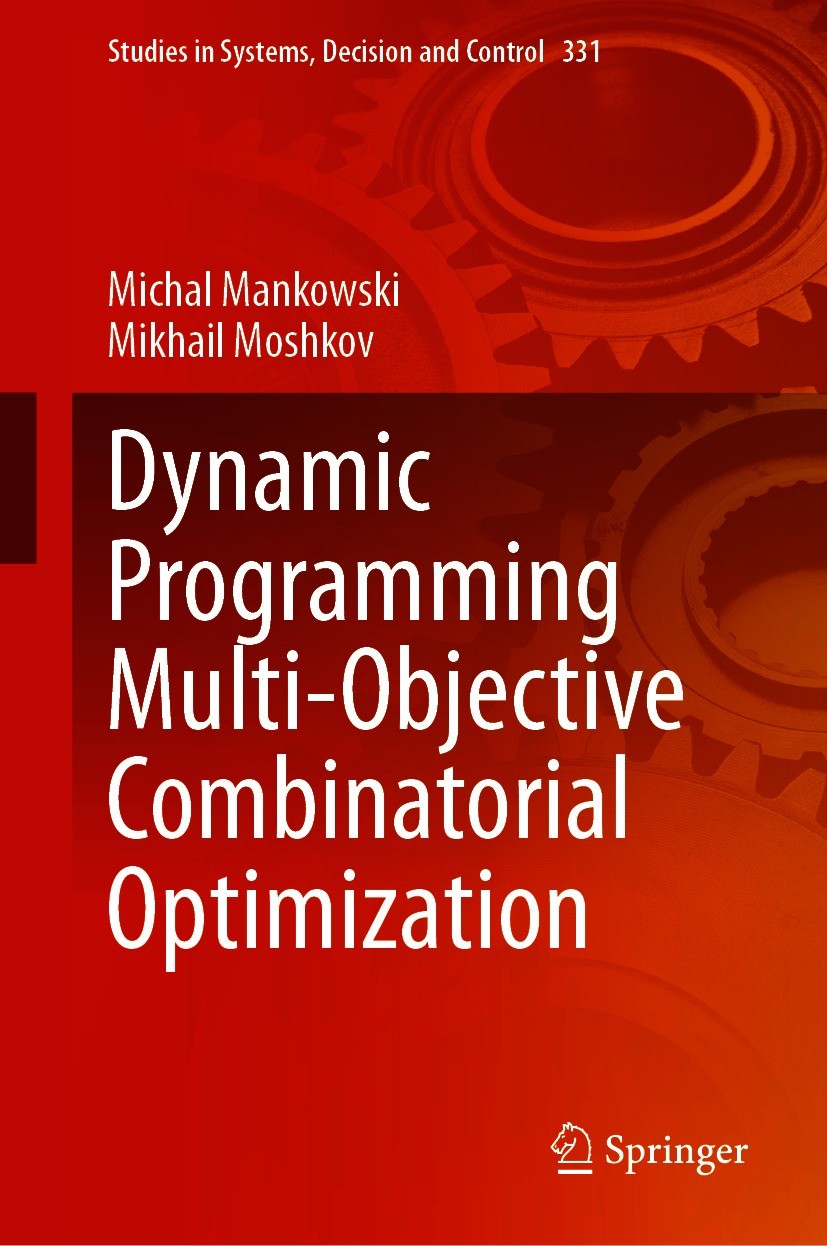| 书目名称 | Dynamic Programming Multi-Objective Combinatorial Optimization |
| 编辑 | Michal Mankowski,Mikhail Moshkov |
| 视频video | http://file.papertrans.cn/284/283721/283721.mp4 |
| 概述 | Considers extensions of dynamic programming for the study of multi-objective combinatorial optimization problems.Proposes a fairly universal approach based on circuits without repetitions in which eac |
| 丛书名称 | Studies in Systems, Decision and Control |
| 图书封面 |  |
| 描述 | This book introduces a fairly universal approach to the design and analysis of exact optimization algorithms for multi-objective combinatorial optimization problems. It proposes the circuits without repetitions representing the sets of feasible solutions along with the increasing and strictly increasing cost functions as a model for such problems. The book designs the algorithms for multi-stage and bi-criteria optimization and for counting the solutions in the framework of this model..As applications, this book studies eleven known combinatorial optimization problems: matrix chain multiplication, global sequence alignment, optimal paths in directed graphs, binary search trees, convex polygon triangulation, line breaking (text justification), one-dimensional clustering, optimal bitonic tour, segmented least squares, optimization of matchings in trees, and 0/1 knapsack problem..The results presented are useful for researchers in combinatorial optimization. This book is also useful as the basis for graduate courses.. |
| 出版日期 | Book 2021 |
| 关键词 | Multi-objective Combinatorial Optimization; Dynamic Programming; Circuits; Matrix Chain Multiplication; |
| 版次 | 1 |
| doi | https://doi.org/10.1007/978-3-030-63920-4 |
| isbn_softcover | 978-3-030-63922-8 |
| isbn_ebook | 978-3-030-63920-4Series ISSN 2198-4182 Series E-ISSN 2198-4190 |
| issn_series | 2198-4182 |
| copyright | The Editor(s) (if applicable) and The Author(s), under exclusive license to Springer Nature Switzerl |
 |Archiver|手机版|小黑屋|
派博传思国际
( 京公网安备110108008328)
GMT+8, 2025-12-18 03:55
|Archiver|手机版|小黑屋|
派博传思国际
( 京公网安备110108008328)
GMT+8, 2025-12-18 03:55


